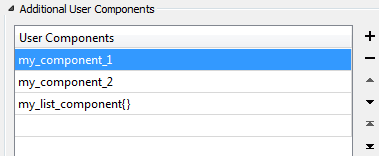This is the version number of the LAS file to be written.
Different LAS versions have support for different components. See Fixed Components below.
Version 1.4 also adds support for having more than 4294967296 points in a file.
Version 1.4 (Legacy-Compatible) writes a 1.4 file that may be compatible with other applications that do not have full 1.4 support. This setting forces use of a "legacy" point format, a GeoTIFF-based coordinate system, and restricts the file to a maximum 4294967296 points.
This parameter enables or disables compression when writing an LAS file. There are two types of compression:
- LAZ (by LASzip): The output file has an .laz extension
- zLAS (by Esri): The output file has a .zlas extension (Windows only)
Compression significantly decreases file size; compressed files are often only 10-20% of the original size. However, compressed files take longer to read than uncompressed files.
Note that LAZ compression is currently not supported for some point formats when writing version 1.4 files. To enforce compression when writing a version 1.4 file, set the ASPRS LAS Version to 1.4 (Legacy-Compatible).
| Point Cloud Component | Data Type | Notes |
|---|---|---|
| x | Int32 | |
| y | Int32 | |
| z | Int32 | |
| intensity | UInt16 | |
| returns | UInt8 | |
| number_of_returns | UInt8 | |
| scan_direction | UInt8 | |
| flight_line_edge | UInt8 | |
| classification | UInt8 | |
| angle | Int8 | |
| file_marker | UInt8 | Allows for LAS flight-line based files to be combined into single files with more than one flight-line. Only supported in version 1.0. |
| user_data | UInt8 (version 1.0) or UInt16 (version 1.1+) | |
| point_source_id | UInt16 | Only supported in version 1.1+ |
| gps_time | Real64 | Only supported in version 1.1+ |
| color_red | UInt8 | Only supported in version 1.1+ |
| color_green | UInt8 | Only supported in version 1.1+ |
| color_blue | UInt8 | Only supported in version 1.1+ |
| classification_flags | UInt8 |
Indicates special characteristics associated with each point. This is a bit flag with the following values:
Only supported in version 1.4. |
| scanner_channel | UInt8 | Indicates the channel (scanner head) of a multi-channel system. Only supported in version 1.4. |
| nir | UInt16 | The NIR (near infrared) value. Only supported in version 1.4. |
LAS supports storing additional components (not part of the fixed component set) for each point through an "extra bytes" Variable Length Record. The User Components parameter specifies a list of components that should be written for each point.
Note that the String data type is not supported for user components.
LAS supports "list" components with up to three elements. To write a list component, add the list suffix {} to the end of a component name. Note that each member of a list component must have the same data type.

You can add, remove, or re-order the list to change the order in which the components are stored in the output dataset.
Advanced
LAS Dataset File
Note: This parameter applies to machines using the Windows operating system.
You must install and license both ArcGIS 10.1 (or newer) and the 3D Analyst extension.
Identifies the name of the Esri ArcGIS LAS dataset file to create. If specified, the writer will produce one .lasd file that references all the LAS files created by the FME LAS writer during the translation.
An .lasd file is required to work with LAS files in the Esri ArcGIS environment. By default, the .lasd file will be written to the same folder as the .las files to which it refers. To write the .lasd to a different folder, use a fully qualified path.
Note that this option is currently incompatible with compression. When writing compressed LAS files, an .lasd file will not be generated.
When an ArcGIS LAS Dataset is written, this parameter determines whether to calculate statistics for the LAS files referenced by the ArcGIS LAS Dataset.
zLAS Parameters
This parameter specifies whether to rearrange point records when applying zLAS compression.
When set to Yes, points are re-ordered to optimize data access and minimize file I/O. This is beneficial when using the compressed LAS data directly.
When applying zLAS compression, the optimizer builds a spatial index to make direct use of the compressed data more efficient. In order to do this, the average point spacing of the data is needed.
This option specifies where that data should be found.
- Scan Points: Scan through point data to calculate an accurate spacing
- From Header: Estimate the spacing based on the extents and number of points. This may be faster but less accurate than Scan Points.
- Specify Value: Explicitly specify the spacing value. Enables the zLAS Point Spacing Value parameter.
This parameter specifies the point spacing for zLAS compression. This is only used when zLAS Point Spacing Source is set to Specify Value.